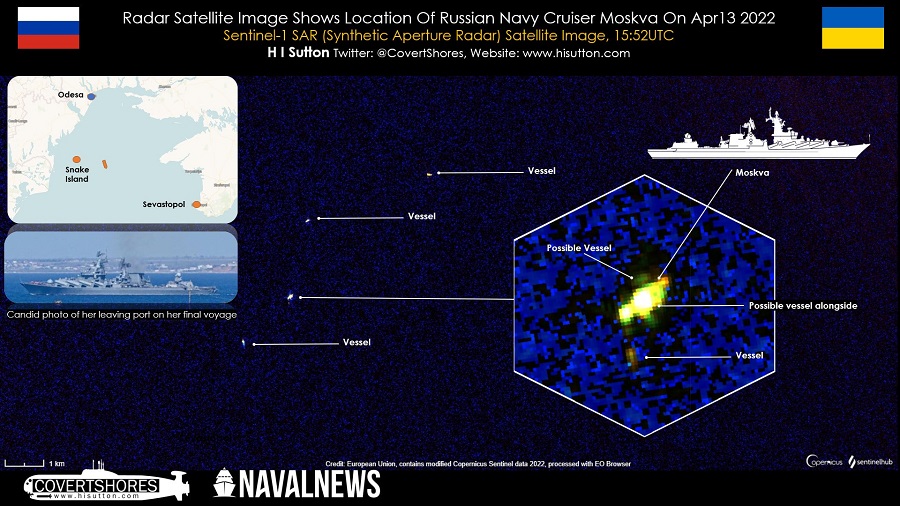The Sentinel satellite transmitted an image of the Russian cruiser Moskva after two Ukrainian Neptune missiles hit it. The image is formed using a synthesized aperture radar that can see through clouds.

The Russian cruiser Moskva on the satellite image
The European Earth remote sensing satellite Sentinel transmitted an image of the flagship of the Russian Black Sea Fleet after it was hit by two Ukrainian missiles. The radar image of the cruiser Moskva was received at 6:52 p.m. Kyiv time.
At that time, the sky over the Black Sea was covered with a thick layer of clouds. Because of this, it was impossible to get an image of a burning cruiser. Sentinel uses a synthetic aperture radar capable of seeing through clouds. But even with the help of this device, it was impossible to get a clear image. However, experts from OSINT were able to recognize it quite reliably.
According to the reports of the Russian Ministry of Defense, the satellite shot the Moskva in the last couple of hours before it finally sank. The image shows how a pair of smaller ships came close to the big one. In addition, several other vessels are nearby.
It was also possible to pinpoint the coordinates of the Moskva at that moment: 45°10′43.39″N, 30°55′30.54″E. The Russian ship was located east of Snake Island, about 150 km from Odesa and 95 km from the nearest Ukrainian coast.
How the Moskva was noticed
The cruiser Moskva is not only 16 cruise missile launchers, but also a powerful air defense system that covers both the ship itself and the entire Russian squadron around it. Therefore, when Ukraine reported its defeat by Neptune missiles, everyone immediately rushed to look for confirmation on satellite images.
However, it was at this moment the storm was raging at sea, and even an object 190 m long could not be photographed by the same Maxar satellites. This is where synthetic aperture radars on satellites, which have been “trained” to transmit information promptly for the last two months, get in handy.
A synthesized aperture radar, like other types of similar devices, emits radio signals and receives their reflection from objects. However, unlike other types, it does not form an image instantly, but “remembers” the characteristics of the target and the position of the satellite at that moment. And when the satellite shifts, by changing the direction and intensity of the signal, we can reliably determine its source and create a clear image.
According to www.navalnews.com
